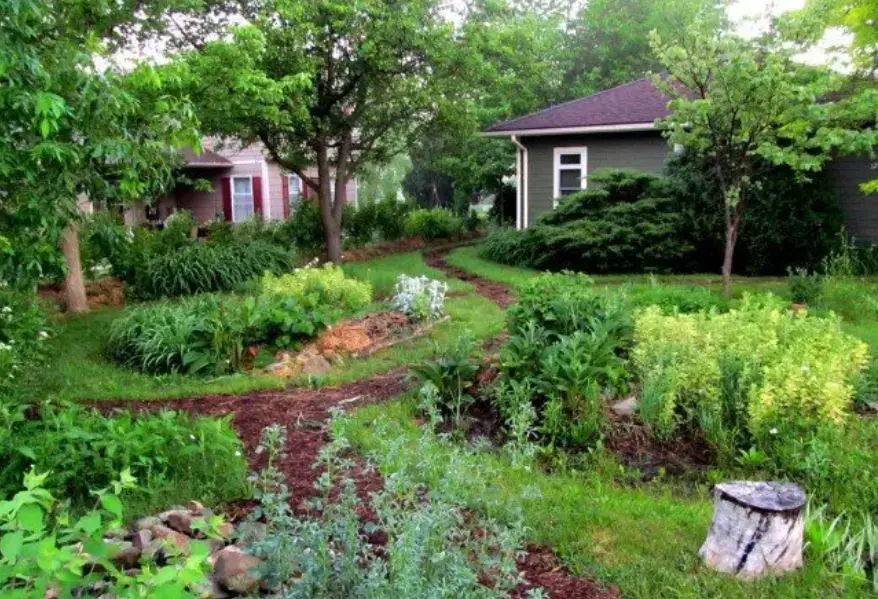Water management requires altering the terrestrial structure in many places. Large water inflows have the power to flood, erode, and harm crops and structures. Swale permaculture is one technique that may assist in reducing any negative effects water may have while also saving or channeling it to necessary areas. Several landscaping options for swales will enhance the garden and control run-off.
Land stewardship demands an all-encompassing strategy to address factors that might result in negative changes. A swale may be necessary to handle large volumes of water left behind by flooding streams, heavy storms, or other disasters. Such structures will slow down, purposely guide, and spread out water flow to reduce damage.
Swales are just ditches that collect water and let it gently seep into the ground. In the case of diversion ditches, they could be barren, but often they include a vegetated swale so that plants can access the moisture they need. Depending on the need for the water, the ditches may be straight or curved.

Swale Gardening Types
A swale is a narrow trench or ditch used to guide water. Mild slopes surround it, and water is moved by gravity. Swales don’t always need to be deep to be useful. They are depressions, and their depth depends on how much water needs to be channeled. In the backyard garden, two shovels’ worth of soil generally suffices. To divert water from buildings, fields, and other objects, a canal must have a slope of at least 1%. The water will either drain or travel to a storage area.
A flat bottom supports the undulating curves of a contoured swale. The bends direct water away from trouble spots while keeping it moving slowly. River stones or plants are often used to border either kind. For best efficiency, the liner should let some moisture percolate through it. The berms around the margins must be high enough to control the running water.
How to Build a Swale
Finding the water’s flow direction is the first step. The region should have a gradual slope to direct the flow downward and away. Watch the natural motion during a downpour and emulate it if possible. Use the swale to direct water away from the foundation of a structure if it naturally gathers around it. Swales shouldn’t be built when there is a steep slope. As a result, water will flow swiftly, eroding the soil as it does so.
The optimum location has a gradient of under 2%. The slope and position of the swale may be determined using a laser level or by using stakes and twine. Swales must be 5 feet (1.5 m) away from structures, septic sites, and substantial tree roots. The location should also get some light if you’re planting a vegetative swale. It’s time to start digging once the site has been gauged. Dig the channel consistently to the finish point, approximately 6 inches (15 cm) deep.
A Vegetated Swale’s Plants
Native riparian and aquatic species are the greatest options for a vegetated swale. The best grasses are sedges and fescue, among others. They are positioned on the berms to maintain the slope and draw in moisture naturally. The depression itself may be planted with rushes.
Whatever you decide, be sure the plant can withstand dry and wet spells throughout the rainy season. Another plant that may survive in swale environments is deer grass. Use buckwheat, Santa Barbara Daisy, dogwood, willow, chokeberry, and buttonbush along the berm’s margins. On the banks of a swale, several perennial plants, including meadowrue, ironweed, and vervain, will flourish.

